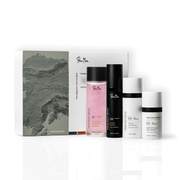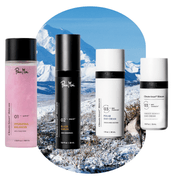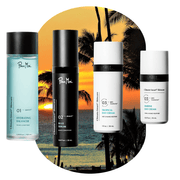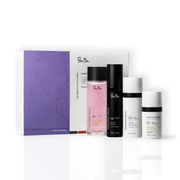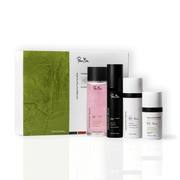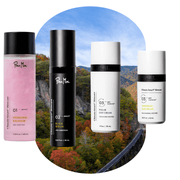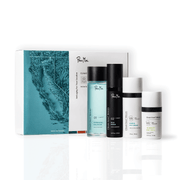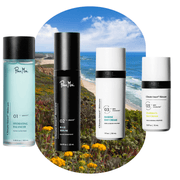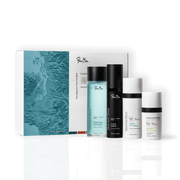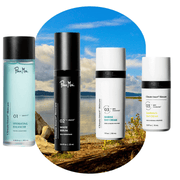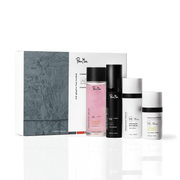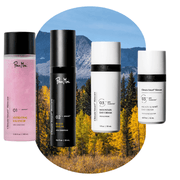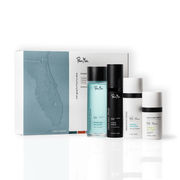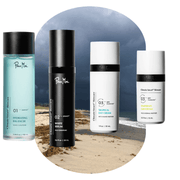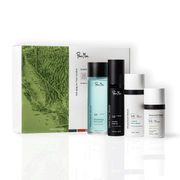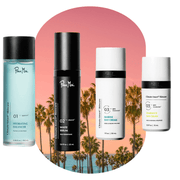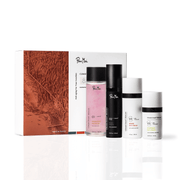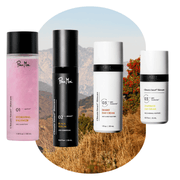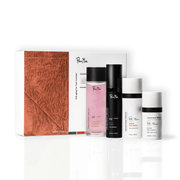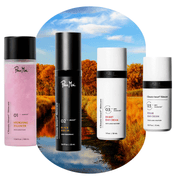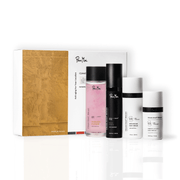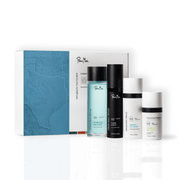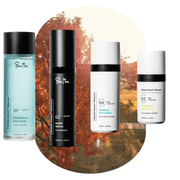16 August 2024
The lipids in your stratum corneum are more than just molecules – they are the guardians of your skin's health and vitality. By understanding their roles, how they are formed, and what makes them vulnerable, you can take proactive steps to protect and preserve these essential components.
The Stratum Corneum: Your Skin's Silent Guardian
Welcome to the wonderful world of the stratum corneum, the outermost layer of your skin. This crucial barrier is more than just a pretty face – it's your first line of defense against the harsh elements of the environment. Think of it as a well-guarded fortress, with lipids playing the role of the brave soldiers that keep the walls strong and resilient. The stratum corneum might be thin, but it is mighty, composed of dead skin cells (corneocytes) embedded in a rich, lipid matrix. This structure is essential for maintaining skin hydration and protection, making it a vital part of our skin's health.
Lipid Lingo: The Different Types and Their Roles
Lipids are the unsung heroes of the stratum corneum. These fatty molecules form a critical part of the skin's barrier function, helping to retain moisture and protect against irritants and pathogens. But did you know there are different types of lipids, each with a unique role?
- Ceramides: The Structural Engineers Ceramides are the most abundant lipids in the stratum corneum. They act like the mortar between bricks, holding the skin cells (corneocytes) together. Without ceramides, your skin would be prone to dryness and irritation, as the barrier would become leaky and less effective. They are crucial for the skin's ability to bind water and maintain a healthy appearance. Ceramides account for about 50% of the lipids in the skin barrier, emphasizing their importance [1].
- Cholesterol: The Flexible Friend Cholesterol in the skin might sound surprising, but it's essential for maintaining flexibility and fluidity. It helps the stratum corneum adapt to various environmental conditions, ensuring that the skin stays supple and functional. Cholesterol makes up about 25% of the lipids in the skin barrier, and without it, our skin would lose its ability to remain flexible, leading to potential cracks and openings where irritants and pathogens could enter [1].
- Free Fatty Acids: The Dynamic Defenders Free fatty acids contribute to the acidic pH of the skin, creating an environment that's hostile to harmful bacteria and supporting the formation of the natural moisturizing factor (NMF). The NMF is crucial for maintaining skin hydration and elasticity. By keeping the skin at its optimal pH, free fatty acids help preserve the integrity and functionality of the stratum corneum. These fatty acids not only fend off bad bacteria but also play a key role in keeping the skin moisturized and elastic, accounting for about 10-15% of the lipid content in the stratum corneum [2].
From Formation to Function: How Lipids Are Made
Ever wondered how these fantastic lipids are produced? The journey begins deep within the skin, where specialized cells called keratinocytes work tirelessly. As these cells mature and move upwards, they synthesize and secrete lipids into the spaces between them. This process is meticulously regulated to ensure that the stratum corneum is equipped with the right mix of ceramides, cholesterol, and free fatty acids. These lipids are produced through complex biochemical pathways that involve enzymes and metabolic processes, highlighting the sophisticated nature of our skin's biology [2].
Vulnerability Points: What Makes Lipids Weak?
Even the mightiest warriors have their vulnerabilities, and lipids are no exception. Several factors can compromise the integrity of these crucial molecules:
- Harsh Weather: The Climate Conundrum Extreme weather conditions, such as cold winters and hot, dry summers, can sap the skin of its natural lipids. This can lead to dryness, flakiness, and a weakened barrier that's more susceptible to damage. In winter, the cold air and indoor heating can strip away moisture, while in summer, sun exposure and air conditioning can have similar drying effects [1].
- Aging: The Natural Decline As we age, the production of lipids naturally decreases. This is why older skin often appears drier and more fragile. The reduction in lipid content means the stratum corneum is less able to retain moisture and protect against irritants. Aging skin produces fewer ceramides and other lipids, which compromises its ability to act as an effective barrier [2].
- Aggressive Skincare: The Product Pitfall Overuse of harsh skincare products, like strong cleansers and exfoliants, can strip the skin of its natural lipids. This can leave the barrier compromised, leading to increased sensitivity and irritation. Many cleansers and exfoliants contain ingredients that can disrupt the lipid matrix, leading to a weakened skin barrier and increased vulnerability to environmental stressors [1].
Lipid Lifeguards: How to Protect and Preserve Your Skin's Lipids
Now that we know what can weaken our lipid soldiers, let's explore how we can protect and support them:
- Moisturizers: The Hydration Heroes Using moisturizers that contain lipids, such as ceramides and fatty acids, can help replenish the skin's natural supply. Look for products designed to mimic the lipid composition of the stratum corneum (like Pour Moi’s Climate-Smart® Day Creams), ensuring they integrate seamlessly. These moisturizers can help reinforce the skin barrier, making it more resilient and better able to retain moisture [1].
- Climate-Smart Skincare: The Weather Warriors Adapting your skincare routine to the weather is crucial. Pour Moi Skincare's innovative approach allows you to rotate moisturizers according to the climate, ensuring your skin gets the right support year-round. This method acknowledges that your skin's needs change with the weather, and having a skincare routine that adapts can make a significant difference in maintaining skin health.
- Gentle Cleansing: The Soft Approach Opt for mild, lipid-friendly cleansers that won't strip your skin of its natural oils. Avoid hot water and harsh scrubbing, which can damage the lipid barrier and lead to increased dryness. Gentle cleansers help maintain the lipid balance, ensuring that your skin's barrier remains intact and functional [2].
- Healthy Lifestyle: The Inside-Out Boost A balanced diet rich in essential fatty acids, such as omega-3 and omega-6, can support lipid production from within. Hydration is also key, so drink plenty of water to keep your skin's barrier function in top shape. Consuming foods that are rich in healthy fats, such as fish, nuts, and seeds, can provide the building blocks for lipid production, enhancing your skin's ability to protect and repair itself [2].
Conclusion: Celebrating the Lipid Legacy
The lipids in your stratum corneum are more than just molecules – they are the guardians of your skin's health and vitality. By understanding their roles, how they are formed, and what makes them vulnerable, you can take proactive steps to protect and preserve these essential components.
The right moisturizer is one that can adapt to the weather, making Climate-Smart® skincare the skincare program that truly matters. Pour Moi Climate-Smart® Skincare is the only skincare brand in the world that provides rotating day creams that adapt to the weather. With this innovative approach, you can ensure that your skin receives the precise care it needs, no matter what challenges come your way.
So, let's raise a toast to the lipid legacy – the unsung heroes that keep our skin looking and feeling its best, no matter what challenges come our way. With the right care and attention, you can ensure that your stratum corneum remains a robust and effective guardian for years to come.
References
Madison KC. Barrier function of the skin: "la raison d'être" of the epidermis. J Invest Dermatol. 2003;121(2):231-41. DOI: 10.1046/j.1523-1747.2003.12359.x PubMed
Vander Heiden, M. Lecture 29: Lipid Synthesis. MIT OpenCourseWare, 2020. Retrieved from MIT OCW.




